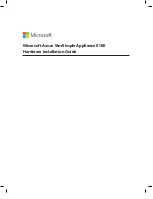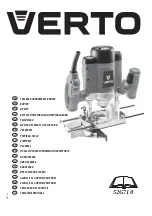
MONGOOSE
Design Manual
47
Connecting the Mongoose to a Network – Best Practices
As previously mentioned, the Mongoose connects to two types of networks – a control network and
a CobraNet network. Both networks use Ethernet, but one sends and receives control data while the
other sends and receives audio data. Each of these networks is described in detail below, along with
recommendations for designing and implementing the networks.
Note:
As a general rule, it is usually best to separate the control network and the CobraNet network.
This is due to the different behaviors, needs, and requirements of the two networks.
About the Control Network
The control network is needed for configuring and managing the Mongoose. You use the Mongoose
Ethernet port to connect the device to a computer running the Mongoose Tracker software. You can
connect this port via CAT 5 to an Ethernet network switch, or you can use a standard Ethernet patch cable
to connect the port directly to a computer. Because this port contains auto-MDIX functionality, you do
not need to use a crossover cable – although it will also work.
Zero Configuration Networking
You probably know that when setting up networks, you typically need to configure IP addresses or enable
dynamic assignment of IP addresses to the devices on the network. The Mongoose system is no exception.
After all, the computer has to have some way of finding the Mongoose devices on the network. You’ll be
glad to know, however, that the engineers at Rane designed the Mongoose to greatly simplify this process.
We are even willing to say that as long as all your control network connections are working properly, the
Mongoose software will
magically
find all the Mongoose devices on the network – without any additional
configuration. The Mongoose software uses a technology called Zero Configuration Networking (or
Zeroconf), which is a set of techniques that automatically creates a usable IP network without configuration
or special servers.
In other words, you won’t need to mess with IP addresses when setting up your
Mongoose control network.
Although rare, there may be a few exceptions to this. For example, if your
control network needs to send data through a router or VPN, you may need to configure one or more
static IP addresses. In such situations or in any large or complex network, we recommend working with
the organization’s IT department.
How Mongoose Tracker Communicates with the Mongoose
It is helpful to understand the basics of how Mongoose Tracker discovers and then communicates with a
Mongoose device over the control network. Mongoose devices send occasional UDP (Zeroconf) messages.
RaneLink (a Windows Service installed with Mongoose Tracker that helps establish communication with
Mongoose devices) listens constantly for these messages and, once it receives one, does the following
two things, if necessary: It sets up a temporary link-local IP address (in other words, it is cleared when
the computer reboots) on the appropriate network interface card (NIC). It also adds an entry to the
computer's network route table. This entry tells Windows and Mongoose Tracker which NIC to use for
communicating with the Mongoose. The same UDP (Zeroconf) messages also indicate to Mongoose
Tracker that a Mongoose device is available on the network, so it can be displayed in the Device Discovery
window.















































